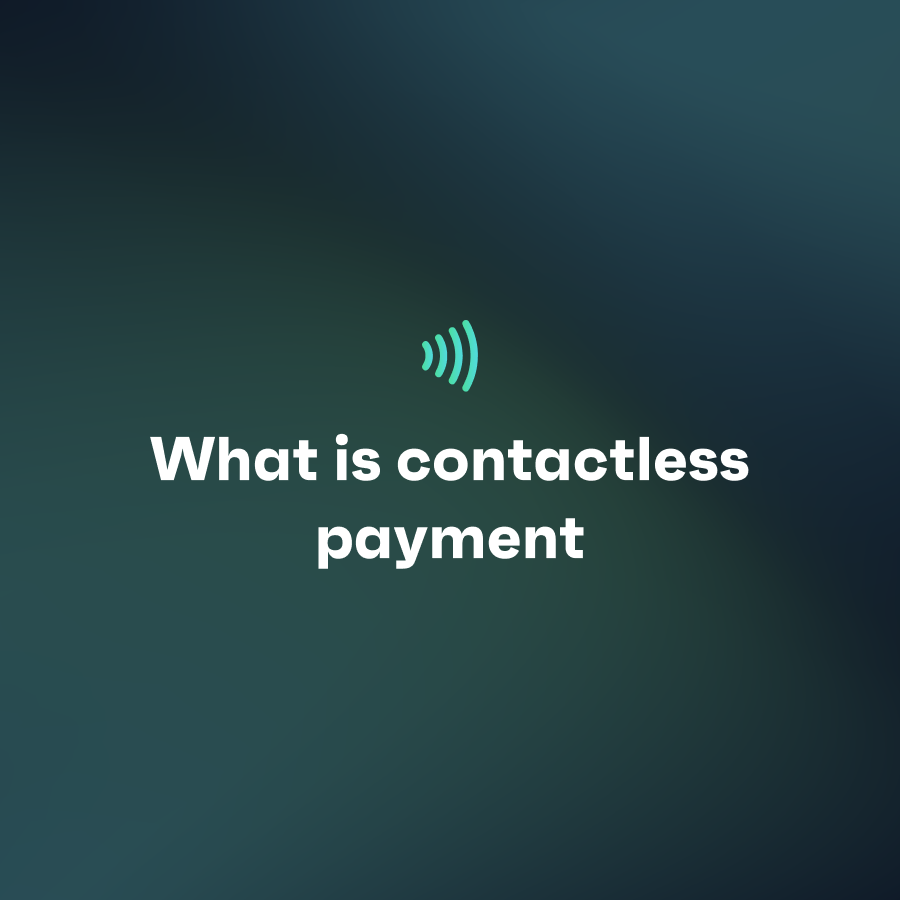
This convenient payment method allows customers to checkout quickly and efficiently making impulse purchases that much easier for merchants to capitalise on. In this article we look at why contactless payments are essential to businesses and explore their security.
What Are Contactless Payments?
Contactless payments are just that – payments that are made by a data exchange that does not require physical contact between the card and the POS terminal.
In the past, card transactions were performed by swiping the magnetic strip through the card reader, and if you want to go even further back, card transactions before that were performed manually by laying the credit card in an imprint slider machine with carbon paper.
Thankfully, life is much easier now and card payments, both credit and debit can be made by a simply coming in close contact with the card reader.
So how does the POS terminal capture the customer data without swiping?
POS terminals that accept contactless payments have in-built contactless payment technology that captures data from the card or smart device using radio frequency identification and near-field communication. A merchant only needs to prompt the payment using the POS. Once the machine reads the data, the payment can go through without the customer’s PIN (depending on the transaction amount and bank limitations). But first, the POS sends this financial data to the bank, and if funds are available, it lights green or signals a checkmark. Just like that, a transaction occurs and the customer can be in and out in minutes.
What Contactless Payment Options Are Available?
There are two main methods for making contactless payments with a POS terminal.
Cards: These contactless payments are the most common and are available in debit or credit cards with NFC embedded chips.
Mobile Wallets: Apple Pay, Google Pay and Samsung Pay, which allow customers to transact using their mobile devices or wearables.
Are Contactless Payments Secure?
Contactless payments eliminate the need to hand over cards, allowing customers to keep their card details confidential.
They also feature the following security measures:
- Tokens: Instead of using card data in transactions, contactless payments rely on tokens. These unique numbers are available only once to the cardholder, making it hard for third parties to access and use this information.
- Encryption: Using wireless technology to transmit data opens security loopholes. But with contactless payments, the transactions feature encrypted data that unauthorised parties cannot access. Even if someone tried to intercept the codes, they would be unsuccessful.
- Thresholds: Financial institutions understand that scammers can target contactless payments, so they limit the transaction amounts per customer. They also require customers to sign into their accounts using a PIN to increase their limit, making it harder for cybercriminals to take advantage of contactless payments.
- Two-Factor Authentication: PINs are sometimes easy to guess, so most financial institutions include two-factor authentication. This security measure requires clients to enter additional information before completing a transaction. In many cases, people use their facial features or fingerprints. Even if a scammer were to access the card or device, they would have trouble bypassing this requirement.
- Fraud Protection: In the past, if a scammer accessed a conventional card and used it for fraud, the cardholder would be liable. But now, most card issuers do not charge the cardholder. If the holder can prove the transactions were unauthorised, they will not pay the accrued debt.
The Upside to Contactless Payments
Contactless payments are quick, easy, and are a standard expectation for customers globally. Here are a few reasons why you should consider a POS terminal with contactless payment technology in your payments strategy.
- Security: Conventional card payments had a significant security loophole–third parties could skim and use the card data. Contactless payments do not require customers to hand over their cards, and the data transmitted is encrypted.Speed: Customers can tap and go instead of waiting for merchants to swipe their cards and enter their PINs. It makes checking out a seamless process for customers and merchants.
- Convenience: Contactless payments allow cardholders to integrate their payments with their devices to complete transactions without their cards.
The use of contactless payment technology will only increase and , and with payabl., you can embrace our omniverse of payments with our all-in-one payabl.POS terminal, which of course, features contactless payment technology. This scalable payment solution comes with fully certified PCI-DSS terminals for added security, an array of network connectivity options, and smooth API integration to suit all business sizes.
